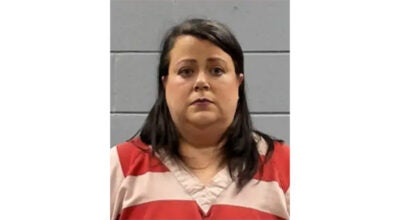Hurricane Nate targets Mississippi tonight: 5 things to know
Published 9:30 am Saturday, October 7, 2017
Hurricane Nate is tracking toward a direct strike on the Mississippi Gulf Coast tonight. The latest updates say it will be a category 2 storm when it makes landfall.
It will likely be the first direct hit on the Mississippi coast in years. Mississippi Gov. Phil Bryant declared a state of emergency in six southernmost counties. Hurricane warnings have been issued by the National Weather Service along the Mississippi coast and other counties connecting to coastal counties.
The National Hurricane Center said today that Hurricane Nate is strengthening and could have winds in excess of 90 miles per hour, as a category 2 storm. Storm surge in Mississippi could reach 11 feet.
Here are 5 important things Mississippians should know about Hurricane Nate:
1) What time will Hurricane Nate strike the Mississippi Coast?
Hurricane timing can be hard to pinpoint exactly, but speed of the storm gives a good indication. The latest forecast models suggest Hurricane Nate is on track to make landfall on the Mississippi Gulf Coast tonight between midnight and 2 a.m. So that will be early Sunday morning but in the overnight hours of tonight.
2) Should Mississippi be afraid of Hurricane Nate?
Hurricane Nate is no Hurricane Katrina, the last powerful storm to devastate the region (2005). Katrina made landfall west of the Mississippi coast, closer to New Orleans. But, it had stronger winds and more storm surge than Nate is forecast to have. It appears Nate will be a category 2 storm, but if winds are at 105 miles per hour near the center of the storm, as forecast, that can cause damage. Hurricanes can also spawn tornadoes for miles in every direction. So yes, residents should be prepared for a strong storm.
3) Will Mississippi face flooding like Houston did in Hurricane Harvey?
No. Hurricane Nate is moving very, very fast. This storm will strike a blow then keep moving, arriving in East Tennessee by Sunday evening. That storm’s brisk pace – currently north, northwest at 22 miles per hour – means that flooding won’t get anywhere near what happened in Texas and Louisiana with Harvey.
Current models suggest southern counties of Mississippi will get between 3 and 5 inches of rain tonight with the hurricane. Areas east of Mississippi, along the Alabama coast and northward into Alabama, will likely get the heaviest rainfall – some 5 to 8 inches. That’s because the east side of the storm is always the strongest. Those nearer the storm’s center – likely Mississippi – will get the highest winds, but likely less rainfall.
4) Will storm surge be dangerous along the Mississippi coast?
Yes! Bad timing with a high tide. Storm surge is the biggest risk along the Mississippi coast tonight, perhaps. State officials, at a briefing Friday in Gulfport, warned that Nate’s main danger in that state will be from up to 11 feet of storm surge in low-lying coastal areas, as well as from winds that could damage mobile homes, according to the AP. Areas prone to storm surge include Biloxi, Gulfport and Pass Christian. The official latest forecast says storm surge will likely be 7 to 11 feet in this area.
The bad news is that high tide is scheduled along the Mississippi coast for about the exact time that Hurricane Nate will hit, increasing the storm surge. For instance, high tide time forecast for Waveland tonight is 1:20 a.m. That’s right about when Hurricane Nate will make landfall.
5) Should we evacuate?
Officials suggest if you are in an area prone to flooding along the coast, leave. Forecasters also note that while it appears Nate will be a category 1 storm it could always strengthen at the last minute as Harvey did months ago. Those riding out Nate with hurricane parties and the like should be in a safe location. Also, power outages will be high in the area if Nate makes a direct hit so everyone should be prepared for everything that may come in the storm.
“If you are in an area that has flooded (before), I would recommend you evacuate that area until the storm has ended and the water has receded for your own personal safety and for the safety of the first responders that will be responding in the event you are trapped,” Gov. Phil Bryant said.
More News





